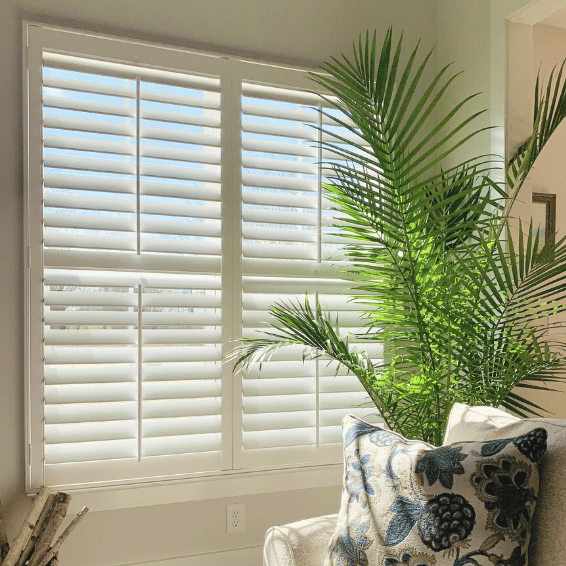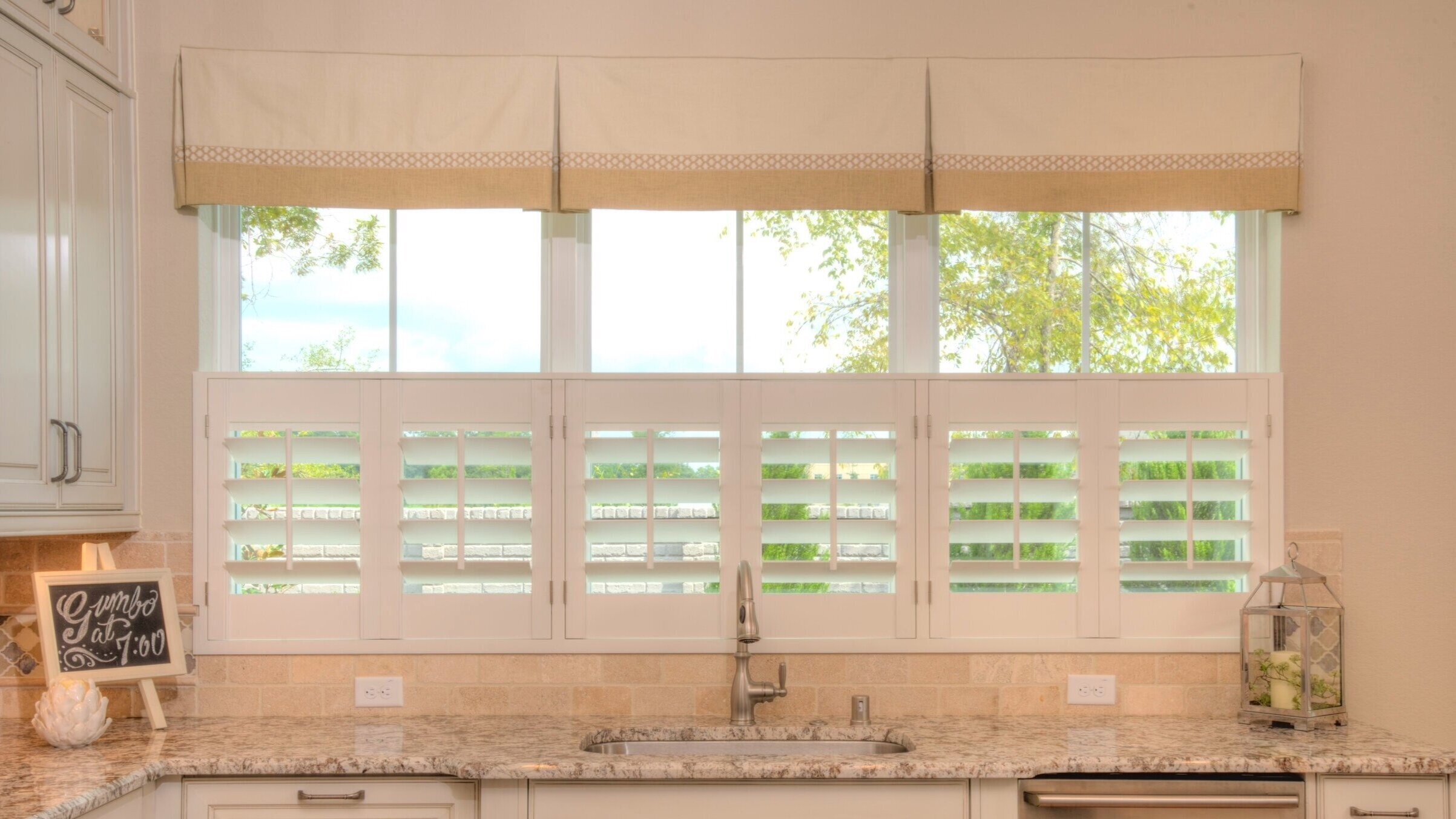Window Shades Phoenix: A Selection of Colors and Styles to Pick from
Window Shades Phoenix: A Selection of Colors and Styles to Pick from
Blog Article
What to Think about When Picking Between Blinds and Shutters for Your Windows: An In-depth Evaluation of Each Option's Benefits
Selecting the right window treatment is a decision that transcends simple appearances; it includes functionality, upkeep, and long-lasting financial investment. Blinds present a adaptable and economical option, while shutters provide unparalleled toughness and design.
Secret Differences Between Shutters and blinds
Regularly, property owners locate themselves mulling over between shutters and blinds when picking home window therapies. Recognizing the essential differences between these 2 options can significantly affect their decision-making procedure.
Blinds are generally made from materials such as wood, artificial timber, light weight aluminum, or plastic. Blinds are typically a lot more cost-effective, appealing to budget-conscious property owners.
On the other hand, shutters are solid window treatments that can be custom-fitted to the window framework. They are generally built from long lasting products like timber or composite, offering an extra irreversible and robust remedy. Shutters offer far better insulation and can enhance the general power effectiveness of a home. In addition, they usually call for even more upkeep and investment compared to blinds due to their building and construction and installation complexity.

Advantages of Blinds
Blinds use a functional and practical service for home owners seeking reliable window therapies. One of the key benefits of blinds is their adaptability to numerous designs and choices. Readily available in many materials such as timber, fake wood, light weight aluminum, and material, they can complement any kind of interior decoration plan. Furthermore, their wide variety of colors and appearances allows for customization to match existing design.
An additional substantial advantage of blinds is their convenience of procedure. Many modern-day blinds come with easy to use systems, consisting of mechanized systems and cordless choices, making them available for every ages. This benefit is boosted by their capability to provide exact light control, enabling property owners to easily adjust the level of sunshine getting in an area.
Blinds likewise use exceptional privacy choices, as they can be totally opened up, partially tilted, or completely shut, depending upon the desired level of seclusion. They are commonly more cost-effective than shutters, giving an economical service without sacrificing design or performance. Upkeep is straightforward, as most blinds can be cleaned up with a simple wipe-down, making sure that they continue to be an appealing feature in any type of home for years to come.
Advantages of Shutters
Shutters provide a distinctive set of benefits that make them an appealing option for house owners looking for durable and stylish window therapies. Among the key advantages of shutters is their remarkable longevity - window shades phoenix. Built from durable materials such as timber, vinyl, or composite, they are created to endure the examination of time and resist damages from UV rays, moisture, and temperature changes

Shutters also supply enhanced privacy and light control. House owners can conveniently change the slats to attain the desired level of brightness while keeping personal privacy from the exterior. Unlike view blinds, which may sag or flex in time, shutters keep their shape and functionality.
Furthermore, shutters can increase the worth of a home (shutters phoenix). Their classic aesthetic and resilience attract potential customers, making them a rewarding investment. In summary, the resilience, power efficiency, personal privacy control, and possibility for raised building worth make shutters a compelling option for home window treatments
Visual Factors To Consider
When selecting window therapies, visual considerations play a vital function in improving the general layout and ambiance of a room. Both shutters and blinds use unique aesthetic qualities that can enhance different indoor designs, from contemporary to conventional.
Blinds typically supply a sleek, minimal appearance, conveniently offered in a variety of colors and materials. This convenience enables home owners to coordinate blinds with existing decor, producing a unified appearance. Their straight or upright slats can add a contemporary side, making them suitable for city setups.
In contrast, shutters exhibit a classic elegance that improves rustic and conventional interiors. Their strong framework and customizable coatings, such as wood spots or repainted choices, evoke a sense of eternity. Shutters can offer as a statement item, drawing focus to the home window while providing an upscale visual.
Inevitably, the selection in between shutters and blinds should show not just website here personal style yet additionally the wanted atmosphere of the space. By meticulously considering exactly how each choice aligns with the general design vision, homeowners can successfully enhance their room's aesthetic appeal, making sure a harmonious and welcoming setting.
Expense and Maintenance Variables
Cost and maintenance are critical facets to consider when choosing between blinds and shutters for home window treatments. Blinds are typically extra budget-friendly, with a wide variety of choices offered at different rate points. Standard textile or plastic blinds can be quite budget friendly, while premium materials like timber can boost the expense. Installation is commonly simple, usually enabling do it yourself techniques, which might further decrease expenses.
In comparison, shutters have a tendency to bring a greater preliminary cost as a result of their personalized production and durable construction. However, this investment may yield long-lasting financial savings, as shutters are commonly extra durable and require much less frequent substitute. They also use premium insulation, possibly decreasing energy expenses gradually.
Maintenance plays a substantial role in the general expense of window treatments. Blinds typically call for normal cleaning and periodic cleaning, while shutters can be wiped down with a wet cloth for cleansing, making them easier to preserve. Furthermore, shutters are much less at risk to harm from UV rays and dampness, adding to their long life. Eventually, the selection in between shutters and blinds ought to stabilize both first investment and ongoing maintenance requires to ensure a sufficient roi.
Conclusion

Blinds present a cost-effective and flexible option, while shutters offer exceptional resilience and design.Cost and upkeep are crucial elements to consider when choosing in between blinds and shutters for home window therapies. Blinds normally call for routine cleaning and periodic cleaning, while shutters can be cleaned down basics with a damp towel for cleansing, making them less complicated to keep. Ultimately, the option between shutters and blinds must stabilize both preliminary financial investment and continuous upkeep needs to ensure a satisfying return on investment.
In recap, the choice in between blinds and shutters pivots on various elements, consisting of product make-up, layout versatility, and expense.
Report this page